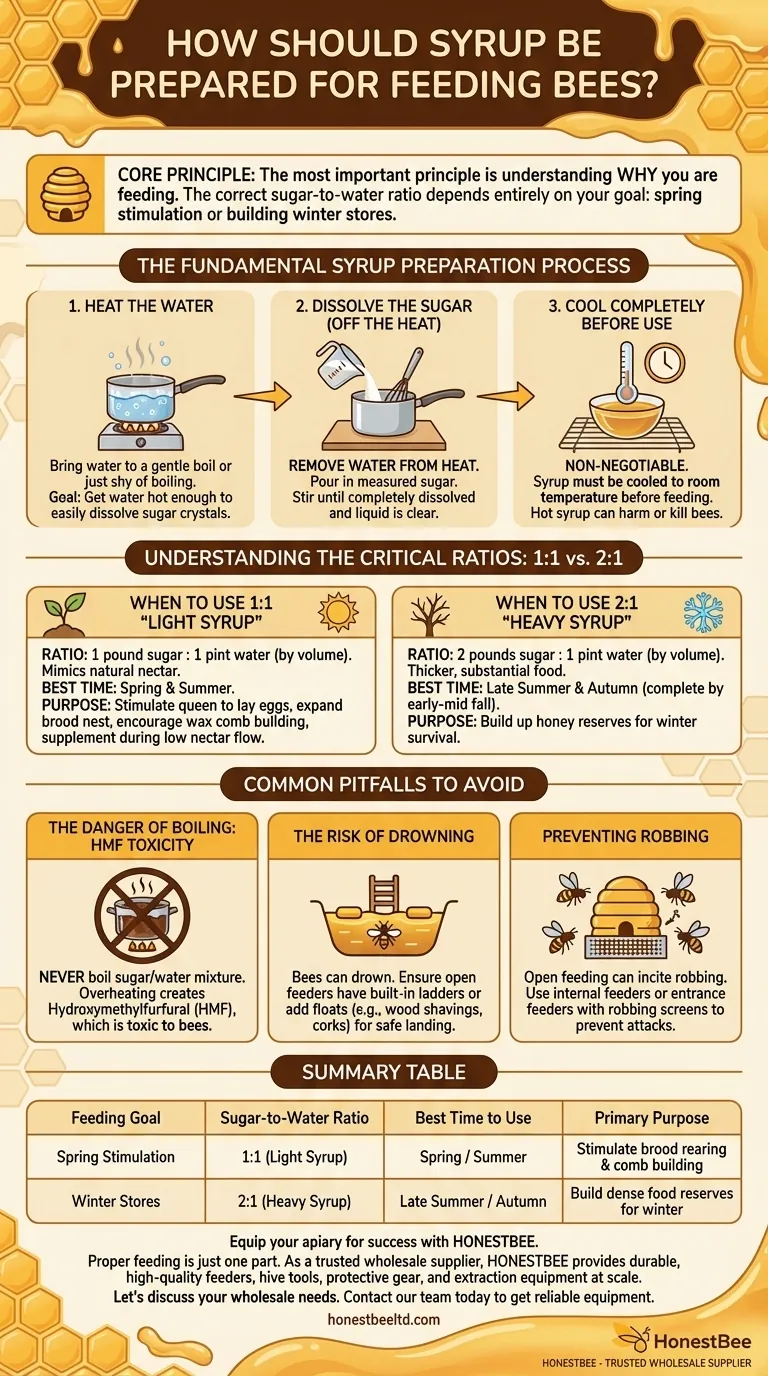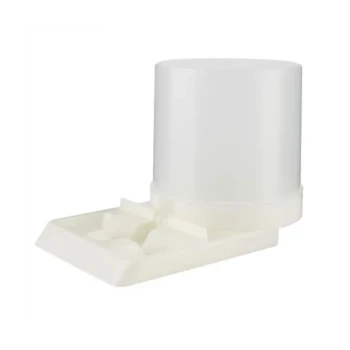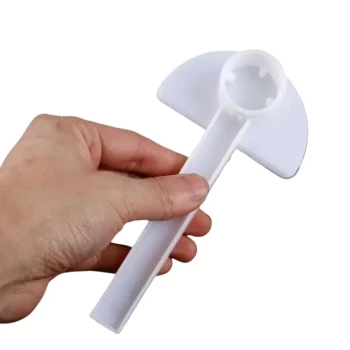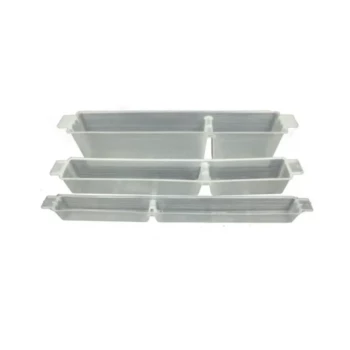To properly prepare sugar syrup for bees, you should use hot, near-boiling water to dissolve the sugar completely. A 1:1 ratio of sugar to water by volume is used for spring stimulation, while a heavier 2:1 ratio is used in the fall to build winter stores. It is critical that you do not boil the sugar-water mixture, as this can create compounds toxic to bees, and you must always allow the syrup to cool to room temperature before feeding it to your colony.
The most important principle is not the recipe itself, but understanding why you are feeding your bees. The correct sugar-to-water ratio depends entirely on your goal, whether it is to stimulate colony growth in the spring or to build dense food stores for the winter.

The Fundamental Syrup Preparation Process
Preparing syrup is simple, but precision is key to ensuring the health of your bees. The following steps apply regardless of the ratio you are making.
Step 1: Heat the Water
Bring your desired amount of water to a gentle boil or just shy of boiling. The goal is to get the water hot enough to easily dissolve the sugar crystals.
Step 2: Dissolve the Sugar (Off the Heat)
Remove the water from the heat source. Pour the measured amount of sugar into the hot water. Stir the mixture until all the sugar has completely dissolved and the liquid is clear.
Step 3: Cool Completely Before Use
This step is non-negotiable. The syrup must be cooled to room temperature before you place it in any feeder. Hot syrup can seriously harm or kill your bees.
Understanding the Critical Ratios: 1:1 vs. 2:1
The concentration of your syrup sends a specific signal to the colony. Using the right ratio at the right time is a hallmark of effective beekeeping.
When to Use 1:1 "Light Syrup"
A 1:1 ratio of sugar to water (e.g., 1 pound of sugar in 1 pint of water) mimics the consistency of natural nectar. This light syrup is typically used in the spring and summer.
Its primary purposes are to:
- Stimulate the queen to lay more eggs and expand the brood nest.
- Encourage bees to draw out new wax comb on foundation.
- Supplement stores during a period of low nectar flow.
When to Use 2:1 "Heavy Syrup"
A 2:1 ratio of sugar to water (e.g., 2 pounds of sugar in 1 pint of water) is much thicker and is used to provide substantial food stores.
This heavy syrup is fed in the autumn. Its sole purpose is to help the bees build up their honey reserves to survive the winter. This feeding should be completed by early-to-mid fall to give the bees enough time to process and cap it before cold weather arrives.
Common Pitfalls to Avoid
Simple mistakes in syrup preparation or feeding can have significant negative consequences for your hive.
The Danger of Boiling: HMF Toxicity
Never boil the sugar and water mixture. Overheating or boiling sugar can cause caramelization and produce a compound called Hydroxymethylfurfural (HMF). While present in small amounts in honey, high levels of HMF created from boiling are toxic to bees.
The Risk of Drowning
Bees can easily drown in open pools of liquid. If using open feeders like frame feeders or top feeders, ensure they have built-in ladders, floats, or add your own "floats" (like wood shavings or corks) to give the bees a safe place to land. Inverted jar or bucket feeders naturally minimize this risk.
Preventing Robbing
Open feeding can incite "robbing," where bees from stronger nearby hives attack a weaker hive to steal its food stores. Using internal hive feeders (frame or top feeders) or entrance feeders with robbing screens can help prevent this dangerous situation.
Making the Right Choice for Your Goal
Your feeding strategy should always be intentional and based on the colony's current needs and the time of year.
- If your primary focus is stimulating spring growth: Use a 1:1 "light syrup" to encourage brood rearing and comb building.
- If your primary focus is building winter food stores: Use a 2:1 "heavy syrup" in the early autumn to ensure the colony has enough food to survive.
- If your primary focus is bee safety: Always dissolve sugar in water that has been removed from the heat and ensure the syrup is completely cool before feeding.
By matching your syrup to the season and your objective, you provide your bees with precisely what they need to thrive.
Summary Table:
| Feeding Goal | Sugar-to-Water Ratio | Best Time to Use | Primary Purpose |
|---|---|---|---|
| Spring Stimulation | 1:1 (Light Syrup) | Spring / Summer | Stimulate brood rearing & comb building |
| Winter Stores | 2:1 (Heavy Syrup) | Late Summer / Autumn | Build dense food reserves for winter |
Equip your apiary for success with HONESTBEE.
Proper feeding is just one part of a thriving beekeeping operation. As a trusted wholesale supplier to commercial apiaries and equipment distributors, HONESTBEE provides the durable, high-quality supplies you need at scale—from feeders and hive tools to protective gear and extraction equipment.
Let's discuss your wholesale needs. Contact our team today to get reliable equipment that supports the health of your bees and the growth of your business.
Visual Guide

Related Products
- HONESTBEE Professional Hive Top Bee Feeder Feeding Solution
- HONESTBEE Entrance Bee Feeder Professional Hive Nutrition Solution for Beekeeping
- HONESTBEE Round Hive Top Bee Feeder for Syrup
- Rapid Bee Feeder White Plastic 2L Round Top Feeder for 8 or 10-Frame Bee Hives
- Classic Boardman Entrance Bee Feeder Hive Front Feeding Solution
People Also Ask
- How do I keep bees from drowning in my top feeder? Ensure Safe Feeding for Your Hive
- What is the best way to top feed bees? A Safe, High-Volume Feeding Solution for Your Apiary
- What should be done with feeders and equipment after feeding bees? Essential Steps for Apiary Health
- What safety features are included in top feeders? A Guide to Drowning Prevention and Hive Safety
- What features make top feeders a reliable choice for beekeepers? A Guide to Safe, Efficient Hive Nutrition



















